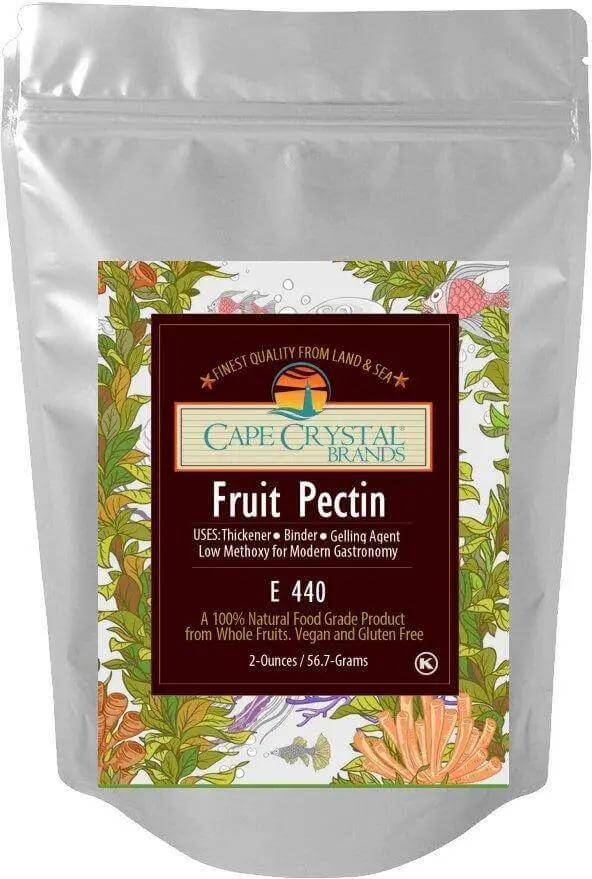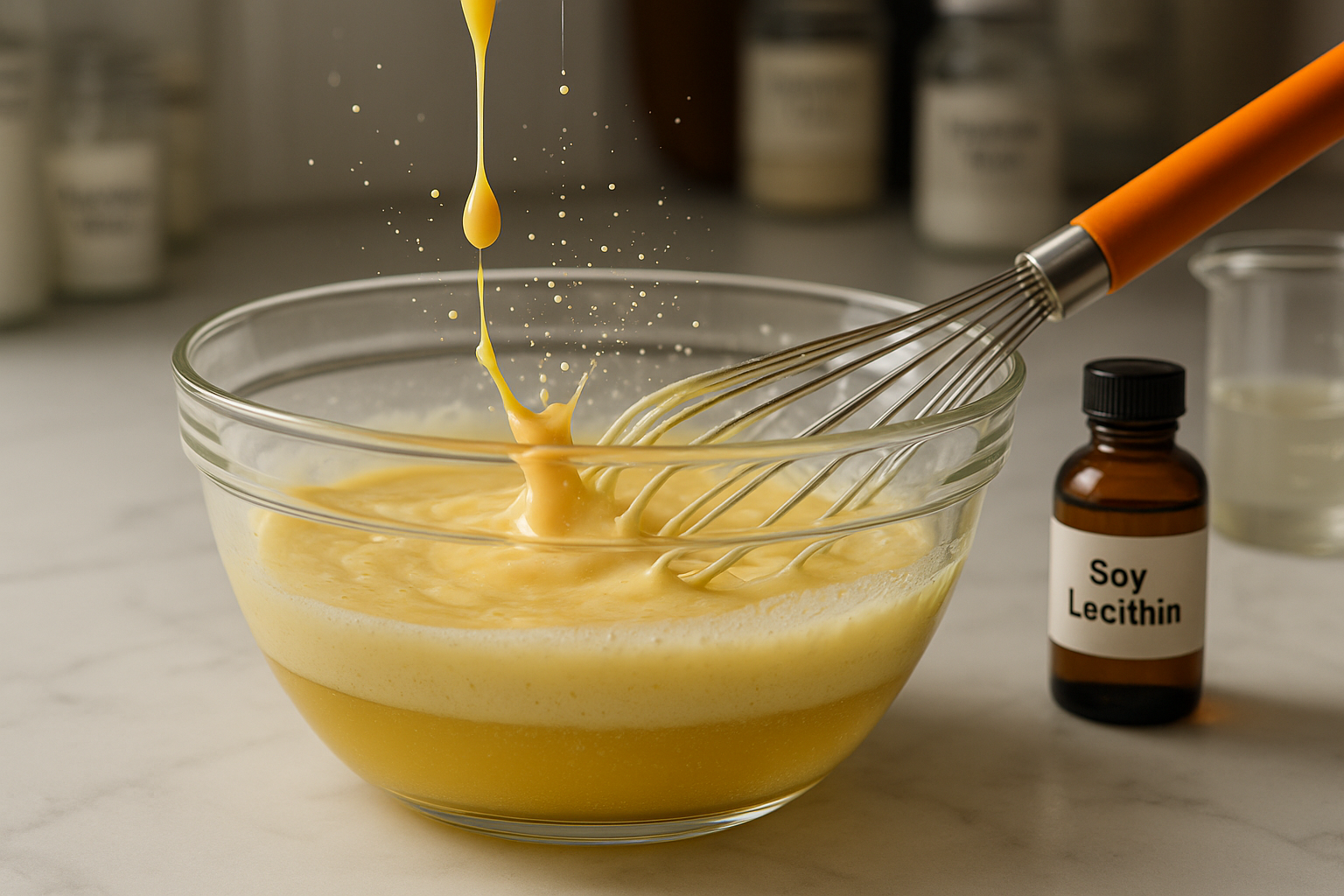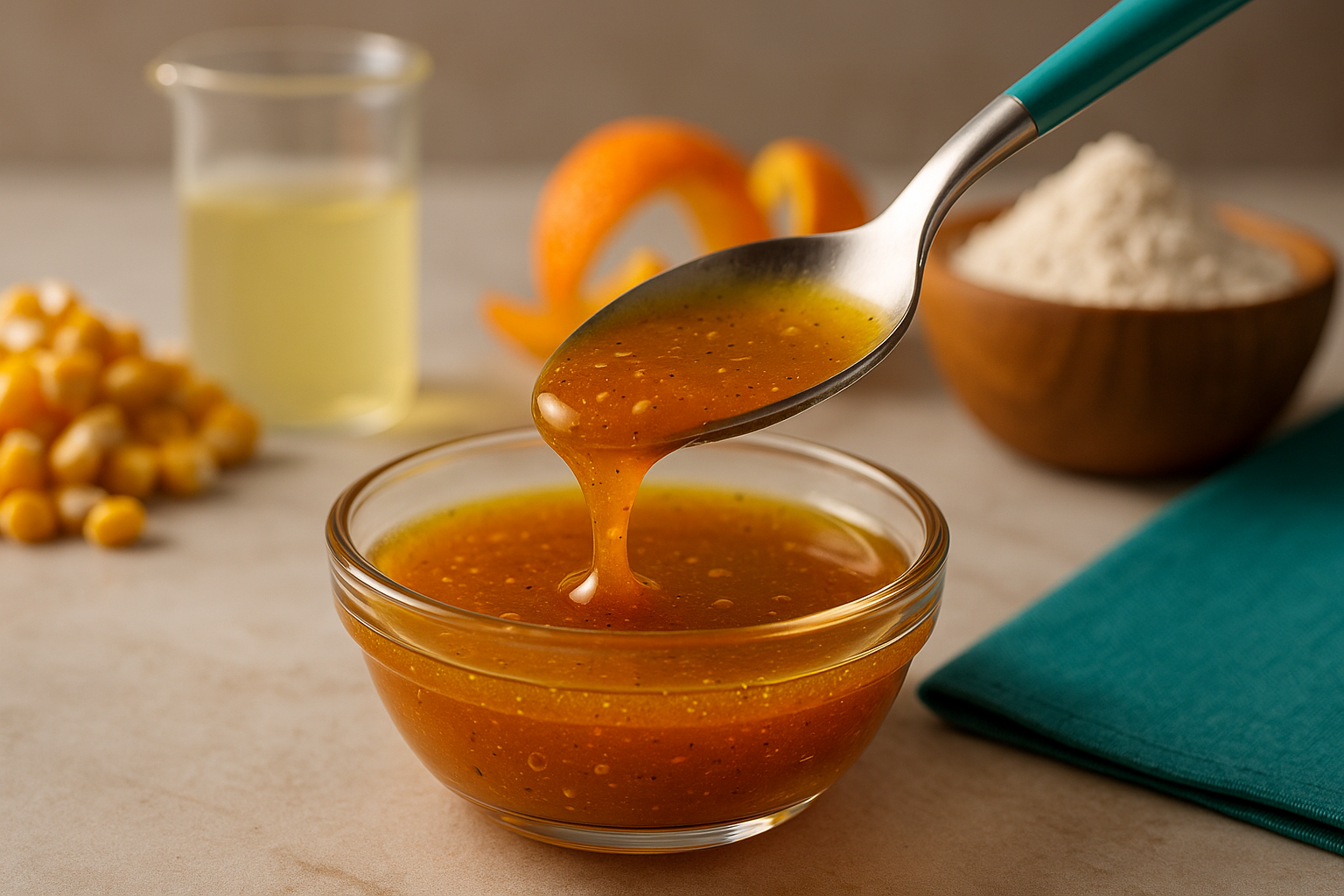

The Science of Thickening Fruit Pie Fillings: Choosing the Right Thickener for Perfect Texture
SUBSCRIBE TO OUR BLOG
Promotions, new products, and recipes.
How to Choose the Perfect Fruit Pie Thickener
From classic starches to pro hydrocolloids—what to use, when, and why.
When it comes to fruit pies, the difference between a luscious, slice-perfect filling and a runny mess comes down to one thing — your thickener. Professional bakers know that no single starch does it all. The right choice depends on your fruit, how the pie will be served, and whether you plan to freeze it later.
Below, we’ll explore the science behind each thickener, and how modern ingredients used by pros — like pectin, xanthan gum, guar gum, and locust bean gum — give you consistent, bakery-quality results.
1. Cornstarch: The Classic Glossy Thickener
Cornstarch gives fruit fillings a clear, glossy finish that looks beautiful under a golden lattice crust. However, it’s not a great freezer candidate — frozen pies made with cornstarch often “weep” upon thawing.
Texture: Smooth and clear, light mouthfeel.
Best for: Fresh pies served the same day.
Not ideal for: Frozen pies — it tends to break down.
Try substituting or enhancing cornstarch with a touch of Cape Crystal Xanthan Gum, which stabilizes gels and helps prevent separation.
2. Flour: Old-Fashioned but Reliable
All-purpose flour thickens fruit pies with a cloudier, homemade look and a slightly heavier texture. It freezes a bit better than cornstarch but can mute fruit flavors.
Texture: Dense, opaque, and slightly pasty.
Best for: Apple and pear pies that release less liquid.
Pro tip: Use just enough — over-thickening makes fillings gummy.
3. Tapioca: A Baker’s Secret Weapon
Tapioca (especially instant tapioca pearls) forms a glossy, firm gel that handles freezing exceptionally well. It shines in juicy fruit pies — think cherries, blueberries, or peaches — where liquid control is everything.
Texture: Clear, stable, and elastic.
Best for: Berry pies and any pie you plan to freeze.
Freeze performance: Excellent.
Tapioca’s molecular structure binds moisture without dulling flavor, making it a go-to for bakers who want fruit integrity with slice stability.
4. Clear Jel: The Professional’s Choice
Commercial bakeries favor Clear Jel, a modified starch that remains stable through both high-temperature baking and freezing. It produces consistent results across large batches — ideal for pies destined for retail cases or freezer sections.
Texture: Clear, cohesive, and glossy.
Best for: Any pie needing consistent texture and shelf life.
It’s the secret behind why store-bought pies look perfect every time — and you can achieve the same results at home.
5. Pectin: Nature’s Own Fruit Thickener
Many fruits, especially apples, quinces, and citrus, already contain natural pectin, the same fiber that helps jams set. For fruits that lack enough pectin (like berries or peaches), adding Cape Crystal Fruit Pectin improves structure while keeping the filling naturally fruity.
Texture: Soft gel; helps “set” runny fillings.
Best for: Low-pectin fruits like strawberries and peaches.
Bonus: 100% plant-based and clean-label friendly.
6. Xanthan Gum, Guar Gum & Locust Bean Gum: The Pro Trio
Professional kitchens often rely on hydrocolloid thickeners for ultimate control and stability. Here’s how each works:
- Xanthan Gum: Adds viscosity and prevents water separation even at low levels (0.1–0.5%).
- Guar Gum: Thickens instantly and enhances mouthfeel — ideal for cold-set fillings.
- Locust Bean Gum: Works synergistically with pectin and guar to produce luxurious, gelled fillings with perfect cling.
These hydrocolloids make fillings more stable under heat, humidity, and storage — exactly why commercial pies hold their shape for days without weeping or separating.
7. Matching Thickener to Fruit Type
| Fruit Type | Recommended Thickener(s) | Reason |
|---|---|---|
| Juicy berries (strawberries, blueberries, cherries, peaches) | Tapioca, Clear Jel, Pectin | High moisture content; need strong gel network |
| Apples, pears, bananas | Flour or light cornstarch | Naturally rich in pectin; less liquid release |
| Mixed-fruit pies | Pectin + Xanthan Gum | Maintains balance of clarity and structure |
8. Tips for Thickening Fruit Pies Perfectly
- Pre-mix your thickener with sugar to prevent clumping.
- Measure carefully: Too little, and your pie floods; too much, and it turns gluey.
- Bake thoroughly: Many thickeners activate only after a certain temperature and time.
- Freezing? Avoid cornstarch — opt for tapioca, pectin, or Clear Jel.
- Experiment smartly: A dash (0.1–0.3%) of Cape Crystal Xanthan Gum or Guar Gum can stabilize any recipe.
9. For Commercial Bakers: Precision through Food Science
In professional bakeries, the combination of starches and hydrocolloids ensures texture precision, freeze-thaw stability, and visual consistency. That’s why the same pie looks and tastes identical every time you buy it.
Adding Fruit Pectin, Xanthan Gum, or Guar Gum helps control syneresis (weeping) and guarantees even, glossy results from batch to batch.
In Summary
- Cornstarch: Glossy, not freezer-friendly
- Flour: Opaque, hearty, home-style
- Tapioca: Clear, elastic, freeze-safe
- Clear Jel: Professional-grade and consistent
- Pectin & Gums: Scientific precision and stability
Whether you’re baking one pie for family or a hundred for production, the science of hydrocolloids makes your fillings behave beautifully — every single time.
Explore Cape Crystal’s Professional-Grade Thickeners
Get bakery-quality fruit pie fillings with clean-label hydrocolloids.




How to Measure Hydrocolloids (Fast & Accurate)
Use a gram scale and think in percentages of total fruit filling. Start at the low end; you can always add a touch more on your next bake.
| Ingredient | Typical Use Rate | What It Does | Shop |
|---|---|---|---|
| Fruit Pectin | 0.5% – 1.0% | Sets runny fillings; clean fruit flavor | Buy |
| Xanthan Gum | 0.10% – 0.30% | Boosts viscosity; reduces weeping | Buy |
| Guar Gum | 0.15% – 0.40% | Instant thickening; plush mouthfeel | Buy |
| Locust Bean Gum | 0.20% – 0.60% | Synergy with pectin/guar for cohesive gel | Buy |
Percentages are by weight of total filling (fruit + sugar + juices). Always disperse powders into sugar first to prevent clumping.
Hydrocolloid Calculator
✔ Bake long enough to activate starches/pectin; avoid cutting while piping hot.
✔ For freezer pies: prefer tapioca or pectin; avoid cornstarch.

|
About the Author Ed is the founder of Cape Crystal Brands, editor of the Beginner’s Guide to Hydrocolloids, and a passionate advocate for making food science accessible to all. Discover premium ingredients, expert resources, and free formulation tools at capecrystalbrands.com/tools. — Ed |
Enjoyed this post? Subscribe to The Crystal Scoop
Food-science tips, ingredient know-how, and recipes. No spam—unsubscribe anytime.
- Choosing a selection results in a full page refresh.



